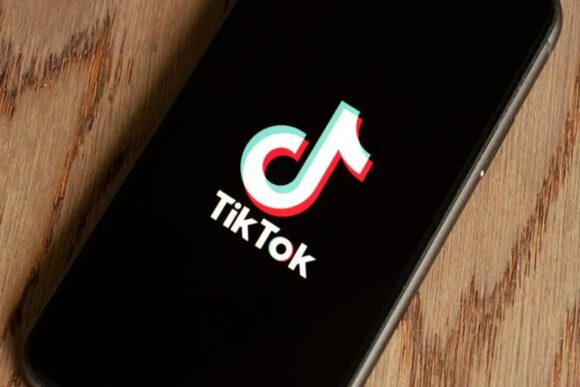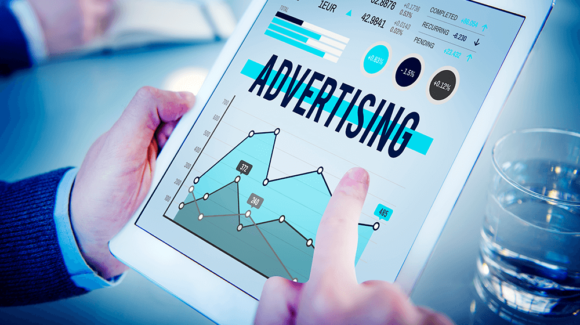


April 26, 2023
Eyes4Research
Brand trust is more important than ever. When a brand has cultivated trust with consumers, it allows them to retain customers and attract new ones. Nurturing brand trust gives a company a competitive advantage and without it, consumers are less likely to buy, regardless of what is being offered.
What is Brand Trust?
Brand trust is the measure of how confident consumers are in a business. Can a consumer count on the information a company provides? Will the customer service always be of the highest quality? Questions around brand trust are a key part of the purchase decision-making process for consumers. How well a company delivers on the answers to questions like these, and how well brands live up to the image projected by their branding are key drivers in establishing brand trust.
Why Brand Trust is Important
Brand trust is essential in helping companies stand out from the competition. If there are two companies that offer two products that are nearly identical, the company with the reputation for stellar customer service and higher quality products will be the one that comes out on top. Consumers want to be able to count on quality products and do not like having to wait on hold for hours to get a problem solved. They will pay a premium for products that last and for brands that they trust.
How a Company Cultivate Brand Trust
It’s essential to know exactly what customers like and dislike about a product as well as knowing what competitors in the same space are doing. Having a 360-degree view of customers’ needs and wants and brand positioning is an important part of building brand trust. Market research, in the form of online surveys, interviews, and panels helps companies gather the data they need to start cultivating brand trust with their customers.
Experienced market research agencies like Eyes4Research have the tools companies need to gather insights from consumers. Eyes4Research can help brands find the right sample and write surveys to yield the highest quality data. By being armed with consumer insights and best practices on how to build brand trust, companies can make better decisions.
Consumers are likely to keep buying products that work the way they are supposed to and they are also likely to spread the word about it, too. Products that do not perform as they should will lead to disillusioned consumers, who will likely never buy from that brand again. In order to offer the highest quality products and services, brands need to know what functions consumers want, how best to serve them, and be able to anticipate what unmet needs might exist in the future. Market research provides companies with the insights they need to meet the needs of their customers.
A company’s relationship with its customers is one of the factors in building brand trust and determining whether a customer becomes a loyal, repeat buyer. Market research helps brands build strong, long-lasting relationships with their consumers by giving them the data that tells them exactly what their customers need and want. When brands make their customers feel like they are important, they are more willing to be an advocate for that brand.
Read more about branding on the Eyes4Research blog. Eyes4Research also has everything brands need to build trust with their customers by collecting high-quality insights from consumers. Our panels are comprised of B2B, B2C, and specialty audiences ready to participate in your next research project. Learn more about our specialty panels here.

April 25, 2023
Eyes4Research
Even before the pandemic, the B2B space, much like its B2C counterpart, relied on e-commerce strategies. Dealing with the fallout of COVID-19 put the spotlight on e-commerce experiences during the B2B sales process. There are several trends that are driving the changing face of B2B e-commerce that companies should be aware of to help them capitalize on e-commerce growth opportunities.
B2C companies have implemented e-commerce customer personalization for some time. It’s now time for B2B merchants to catch up. A recent McKinsey & Company study found that B2B buyers are looking for more personalized buying experiences and would be willing to move their business in order to get it.
Relationships are the foundation of personalized buying journeys and the messaging targeted to customers should stretch from end to end. If B2B companies can create seamless, tailored interactions with their customers, they stand a much better chance of cementing loyalty from their audience.
Learning more about what B2B customers want is critical to refining the process of personalizing the buying process. Market research can help brands gather data on exactly what their target B2B audience wants. Insight solution agencies like Eyes4Research are essential for B2B merchants who need to know what their audience expects and can then tailor their buying journey accordingly. The data gathered through research can help B2B companies better track their customers’ social media engagement and their buying habits in order to better predict what will capture their attention.
Omnichannel is another area that B2C companies have successfully explored, but B2B merchants are starting to take notice. B2B buyers are encountering an increasing number of touchpoints, and according to the McKinsey study mentioned above, they want even more. B2B companies need to ensure that their consumers have positive, integrated experiences on every channel they encounter.
In the B2B industry, consumer touchpoints often include mobile apps, websites, social media platforms, and marketplaces. And these consumers expect a seamless and connected experience between all of the channels. If a customer interacts with an app or website before engaging with a sales representative, they will expect the sales rep to be aware of that previous engagement with the app. Knowing this can help provide important details that can draw in the customer with an enticing offer.
The shift to e-commerce models that happened during the pandemic has given rise to an increased interest in marketplaces. B2B companies have started to adopt the marketplaces that B2C merchants have traditionally used. Companies of all sizes can use marketplaces to reach potential customers, but B2B companies are most likely to select specific marketplace models.
Some B2B companies have chosen to use third-party marketplaces like Amazon. Third-party marketplaces are often less expensive and easier to use for B2B merchants than trying to create an independent platform from the ground up.
Social commerce is another area where B2C companies have already found success in reaching their target audiences. It is a space that is poised to offer a level of growth for B2B companies as well. According to Gartner, 46% of B2B consumers use social media when researching buying decisions, so the target audience is already there. B2B merchants should embrace social media to reach these consumers and engage with them.
But social media isn’t just a place for B2B companies to engage with their audience. It’s also its own marketplace. Companies can build a store right on the apps, giving their customers opportunities to make their purchases without having to leave the app. Selling directly on social media is part of the more significant trend toward, fast, convenient, and personalized service, regardless of the channel.
Omnichannel marketing and social commerce offer new opportunities for B2B e-commerce businesses to engage with their target audiences in new areas. While personalized experiences will require the integration of new technology, it presents exciting new ways for B2B merchants to engage with their customers.
Read more about the B2B industry on the Eyes4Research blog. Eyes4Research also has everything you need to collect high-quality insights from consumers. Our panels are comprised of B2B, B2C, and specialty audiences ready to participate in your next research project. Learn more about our specialty panels here.
4 B2B E-commerce Trends to Know Now
Even before the pandemic, the B2B space, much like its B2C counterpart, relied on e-commerce strategies. Dealing with the fallout of COVID-19 put the spotlight on e-commerce experiences during the B2B sales process. There are several trends that are driving the changing face of B2B e-commerce that companies should be aware of to help them capitalize on e-commerce growth opportunities.
B2C companies have implemented e-commerce customer personalization for some time. It’s now time for B2B merchants to catch up. A recent McKinsey & Company study found that B2B buyers are looking for more personalized buying experiences and would be willing to move their business in order to get it.
Relationships are the foundation of personalized buying journeys and the messaging targeted to customers should stretch from end to end. If B2B companies can create seamless, tailored interactions with their customers, they stand a much better chance of cementing loyalty from their audience.
Learning more about what B2B customers want is critical to refining the process of personalizing the buying process. Market research can help brands gather data on exactly what their target B2B audience wants. Insight solution agencies like Eyes4Research are essential for B2B merchants who need to know what their audience expects and can then tailor their buying journey accordingly. The data gathered through research can help B2B companies better track their customers’ social media engagement and their buying habits in order to better predict what will capture their attention.
Omnichannel is another area that B2C companies have successfully explored, but B2B merchants are starting to take notice. B2B buyers are encountering an increasing number of touchpoints, and according to the McKinsey study mentioned above, they want even more. B2B companies need to ensure that their consumers have positive, integrated experiences on every channel they encounter.
In the B2B industry, consumer touchpoints often include mobile apps, websites, social media platforms, and marketplaces. And these consumers expect a seamless and connected experience between all of the channels. If a customer interacts with an app or website before engaging with a sales representative, they will expect the sales rep to be aware of that previous engagement with the app. Knowing this can help provide important details that can draw in the customer with an enticing offer.
The shift to e-commerce models that happened during the pandemic has given rise to an increased interest in marketplaces. B2B companies have started to adopt the marketplaces that B2C merchants have traditionally used. Companies of all sizes can use marketplaces to reach potential customers, but B2B companies are most likely to select specific marketplace models.
Some B2B companies have chosen to use third-party marketplaces like Amazon. Third-party marketplaces are often less expensive and easier to use for B2B merchants than trying to create an independent platform from the ground up.
Social commerce is another area where B2C companies have already found success in reaching their target audiences. It is a space that is poised to offer a level of growth for B2B companies as well. According to Gartner, 46% of B2B consumers use social media when researching buying decisions, so the target audience is already there. B2B merchants should embrace social media to reach these consumers and engage with them.
But social media isn’t just a place for B2B companies to engage with their audience. It’s also its own marketplace. Companies can build a store right on the apps, giving their customers opportunities to make their purchases without having to leave the app. Selling directly on social media is part of the more significant trend toward, fast, convenient, and personalized service, regardless of the channel.
Omnichannel marketing and social commerce offer new opportunities for B2B e-commerce businesses to engage with their target audiences in new areas. While personalized experiences will require the integration of new technology, it presents exciting new ways for B2B merchants to engage with their customers.
Read more about the B2B industry on the Eyes4Research blog. Eyes4Research also has everything you need to collect high-quality insights from consumers. Our panels are comprised of B2B, B2C, and specialty audiences ready to participate in your next research project. Learn more about our specialty panels here.

April 20, 2023
Eyes4Research
With the recreational use of marijuana legalized in 21 states and counting, more and more people are choosing cannabis as a way to wind down over a cocktail or even a cigarette. A Harris poll released during the pandemic revealed that almost half of all cannabis users age 21 and up have replaced or reduced their alcohol consumption with cannabis. The same study also found that one-third of cannabis users prefer marijuana consumption to alcohol.
More recently, a CivicScience study found that while some people in the UK did observe Dry January at the beginning of this year, one-third of the youngest people surveyed, ages 21-24, simply replaced alcohol with cannabis and CBD products. While younger consumers wanted an alternative mood-altering substance, most older audiences have started to become more aware of the health benefits of cannabis as compared to the often detrimental effects of alcohol.
The long-term effects of alcohol consumption are well-known. Our bodies can effectively process alcohol, but too much can be harmful. But consuming cannabis in any form activates the body’s endocannabinoid system, which is a network of cell receptors that respond to both natural cannabinoids produced by the body and those found in the cannabis plant.
This system plays a role in moderating pain, regulating mood, and keeping the body balanced, in general. The body does not have natural ethanol receptors, so when someone consumes alcohol, the body responds to it as a toxic substance.
Among all the sources of ‘empty calories’, like candy and sugary drinks, alcohol is one of the primary offenders, almost always causing regular drinkers to gain weight. One night out drinking cocktails with friends can easily turn into thousands of calories. Cannabis, on the other hand, is calorie-free.
While a night out on the town might be fun, hangovers are not. The dreaded hangover is the body’s response to the toxicity of and withdrawal from alcohol. With cannabis, it can take a while to determine what the right products and dosages should be for each person, but it generally causes minimal side effects for most people who consume it.
Alcohol can often help people relax, but it is not really conducive to a good night’s sleep. It can interfere with natural rhythms and lead to disruptive sleep, while the body continues to metabolize the alcohol. Cannabis, especially products that are high in CBD, has the opposite effect, because, as stated earlier, it works with the body’s natural regulatory systems to promote relaxation and restful sleep.
Indulging in too much alcohol at once can be extremely dangerous, and even result in death from alcohol poisoning. Conversely, According to the National Institute on Drug Abuse, there has been no documented report of an adult death that has been caused solely by an excess of cannabis consumption.
Note: Eyes4Research is not promoting the use of either of these substances over the other, we are simply presenting the research findings and insights of consumers.
Read more about cannabis consumers and CBD products on the Eyes4Research blog. Eyes4Research also has everything you need to collect high-quality insights from cannabis users. Our panels are comprised of B2B, B2C, and specialty audiences ready to participate in your next research project. Learn more about our cannabis user panel and our other specialty panels here.

April 18, 2023
Eyes4Research
As of now, it is still being determined whether the government will ban TikTok in the U.S. But what has become evident is that the popular app has staked out a place in pop culture and has taken the idea of social commerce and reshaped it in its own image. Products across a wide range of categories have gone viral on TikTok, and many have sold out, often under the hashtag, #TikTokMadeMeBuyIt.
According to TikTok CEO Shou Zi Chew, there are approximately 5 million U.S. businesses that use the app to reach consumers, and many of those brands have seen their sales rise significantly after establishing a presence on the app.
Unlike Instagram, which prioritizes content on accounts that are already popular, TikTok is tailored to feed users content that is based on their interests, allowing brands to find their target audiences– for free. Just by having good content, brands have a chance of finding their audience, even without the resources for a dedicated marketing team. TikTok also has a more casual, less polished aesthetic overall, meaning that smaller brands have been using the lower production values to their advantage by appearing to be more authentic to their audiences.
One of the biggest losses that could result from a ban on TikTok is the loss of the hard-won connection that brands have built with their audiences, especially retailers and e-commerce brands who rely on the platform for marketing and sales. Losing the highly-engaged consumer means losing the ability to drive sales. Many brands rely on TikTok for organic marketing and paid advertising as their primary revenue drivers so a ban would be especially harmful to smaller businesses.
If the ban does take place, it could have a pronounced effect on the economy. A ban on TikTok would put many jobs at risk in the tech sector, which could lead to a slowdown in consumer spending. This would be on top of the other tech layoffs that have been underway over the last several months. Experts are also concerned that a ban could reduce the amount of data available to companies, which they fear could lead to a lower level of economic activity.
How Brands Can Sharpen Storytelling On Other Platforms
Even in the midst of TikTok dominance, there are other social media platforms with plenty of space available for strong and effective storytelling. Market research is essential in order for brands to learn what their customers want and what competition in the same space is doing. Experienced research agencies like Eyes4Research can help brands target and research their audiences and gather the necessary data to learn what resonates with their audiences.
Having this data allows marketing teams to refine their messaging that is specific to each platform, which often attracts different audiences with different expectations of what makes for engaging content.
Read more about the technology and branding on the Eyes4Research blog. Eyes4Research also has everything you need to collect high-quality insights from consumers. Our panels are comprised of B2B, B2C, and specialty audiences ready to participate in your next research project. Learn more about our specialty panels here.

April 13, 2023
Eyes4Research
Audiences see countless numbers of ads every day. But what do they really think about the advertising that they see? Eyes4Research surveyed 500 consumers to learn more about what consumers think about the advertising they see across all platforms– digital and televised, as well as traditional advertising, like billboards and mailers. While audiences are inundated with advertising seemingly everywhere they go, they are often only truly engaged with the ads they see in specific circumstances in order to influence their purchasing decisions and encourage brand recall.
Here are 5 key things to know regarding how consumers feel about the advertising they see every day, as revealed in our new study, Consumer Attitudes and Perceptions About Advertising Styles.
Our study found that when given the change, audiences will almost always skip past the ads. In fact, 45% of the respondents in our survey stated that they tend to skip past ads while listening to a podcast, watching TV, or a movie when they can, in order to get back to what they were watching or listening to.
Even as online ads have become more prevalent, audiences are still unsure about how they feel about digital advertising, especially as it relates to issues of privacy and other tools that are used to create ever more personalized ads. The frequency at which they see those ads are also an issue, with 30% of the respondents in our study revealing that they see too many ads in their social media feeds.
Sometimes an ad can break through the screen and become part of pop culture, thanks to it implanting itself in the memory banks of audiences. But what is the magic that makes an advertisement memorable? Sometimes, it’s a song that makes an ad stand out. 40% of respondents in our survey stated that an ad with a catchy song or jingle was somewhat effective in helping them remember it.
Audiences like to be entertained when they watch an ad, but they still ultimately think that an advertisement should focus on the business of educating a potential customer about their products or services. Only 26% of the respondents in our survey stated that they think that ads should be primarily focused on entertaining an audience.
When it comes to ads that are aligned with holidays or special events like the Super Bowl, or back to school, audiences are more receptive and are more influenced to purchase products or services related to those events. 50% of respondents to our survey revealed that ads created especially for holidays or specific events increase the likelihood of them shopping for those products or services.
Brands spent a record $318B on advertising in the U.S. in 2022. Our study, Consumer Attitudes and Perceptions About Advertising Styles reveals many valuable insights into what consumers think about the various forms of advertising that they encounter every day, on every platform. Click here to download the infographic to learn more about the results of our advertising study.
Eyes4Research has the tools advertising agencies need to collect high-quality insights from consumers so they can target their client’s needs every time. Learn more about our specialty panels here.

April 10, 2023
Eyes4Research
Sports is one of the few things that can unite people across demographics. Fans’ devotion to their favorite teams and preferred athletes can border on obsessiveness, and those athletes can have a profound influence on an audience’s buying decisions. Fans will purchase jerseys, posters, and other items to show their undying support for their teams.
This also extends to products outside of the realm of sports, as professional athletes have been enlisted to help sell a wide range of products, from cars and food to clothing and services. Even before television was widely available, Babe Ruth put his star power behind Wheaties cereal. The aura of a strong, fast, and successful athlete endorsing a product is especially attractive to an advertiser’s target audience.
So what is it about sports and athletes that motivates audiences to buy? And how can market research help advertisers and marketers learn more about which messages resonate with sports fans?
In this age of social media influencers, many of whom have more followers than professional athletes, there is still a foundation of credibility that athletes enjoy within their communities that influencers can’t touch. In addition to the local connections that many pro athletes cultivate as part of their teams’ community service efforts, sports stars have the added advantage of having taken their fans along for the ride of their storied careers.
The sports audience knows exactly how much work their favorite athletes have put into winning their championships and winning their MVP awards. This builds the ever-important trust with the target audience that advertisers and marketers need to convert adulation into sales.
The key is knowing what messaging will connect with which part of this audience. The female sports audience might be influenced by a certain athlete’s endorsement of a product because of his or her efforts to help raise the profile of women’s sports. This is where market research becomes an important part of an advertising strategy. Hiring an experienced data collection firm like Eyes4Research can help brands gather the data it needs to get the messaging right, right out of the gate.
Just about every child everywhere dreams of running faster, jumping higher, and being a world champion at some point. It’s no surprise that children often have their own favorite teams and athletes, and can be as influenced by the endorsements of professional athletes as their parents. According to globalissues.org, children in the U.S. see as many as 25,000 commercials a year.
And while many parents may not be thrilled about some of the products that are featured in the commercials with their kids’ favorite athletes, the children are likely to think that drinking that sugary beverage or eating that hamburger meal will help them be as big and strong as their sports hero.
As mentioned above, the impact of pro athletes on the sports audience is highly effective. But it can be conditional, as well. Sports fans want to see the products that athletes endorse be ones that are actually associated with them and their respective sports. There would be little interest in watching Serena Williams selling baseball equipment or David Beckham lacing up basketball sneakers. The proper athlete-product association is more likely to result in the potential customer considering the product. An arbitrary matchup leaves the consumers less likely to believe in the authenticity of the endorsement.
Read more about consumer attitudes toward sports on the Eyes4Research blog. Eyes4Research also has everything you need to collect high-quality insights from sports enthusiasts. Our panels are comprised of B2B, B2C, and specialty audiences ready to participate in your next research project. Learn more about our sports enthusiast panel and our other specialty panels here.

April 7, 2023
Eyes4Research
The influence of African Americans across entertainment, media, sports, food, and the arts is more pronounced than ever before. Comprising about 14% of the population, the African American audience is an economic heavyweight, with spending power set to reach $1.8T by 2024. This increase in economic influence is being driven by expected population growth of 22% between 2020-2060, compared with a 27% decrease in the non-Hispanic White population during the same time. As more brands look to tap into the economic power of this audience, there are three factors they should be aware of that drive how the African American consumer makes purchasing decisions.
The pandemic and the social upheaval that followed the murder of George Floyd helped reinforce the desire among the African American audience to activate their wallets in order to create a positive impact on the world. COVID-19 disproportionately affected African American consumers, and many of those consumers recommitted to using their economic power to help uplift the community. A recent Neilsen study revealed that the African American audience is more likely than other groups to spend their money supporting products and retailers who make efforts to fight racial injustice, battle hunger, and food insecurity.
Social media is amplifying this message of socially responsible shopping, especially Twitter, where the African American audience comprises a formidable segment of users of the platform. ‘Black Twitter’, as it is known, is a powerful vehicle to spread the word about brands and products that reflect their shared values. Initiatives like the 15 Percent Pledge and Buy From a Black Woman, have made it easier for the African American audience to find these brands by consolidating them in pop-up shopping events and on their respective websites.
In the past, when consumers felt ignored or misrepresented, there wasn’t much recourse beyond an angry letter or phone call to the customer support line. But as mentioned above, members of any audience can turn to social media to air their grievances or shout out a brand that gets it right when it comes to representation or messaging that reflects their worldview.
The African American audience has become ever more aware of how brands speak to them, and are quick to call out messaging that misses the mark, or worse, ignores them altogether. Often, the reason this happens can be attributed to a lack of diversity at the executive level of the team. Another is a lack of research to find out who the African American consumer is and what motivates them to support one brand over another. Hiring a qualified and experienced market research agency like Eyes4Research can help brands drill down on exactly what resonates positively with African American consumers and gather the data that they need to effectively speak to and with this audience.
Among affluent African Americans, clothing, especially luxury fashion, is employed to counter racial stereotyping. To this demographic of African Americans, dressing more casually is perceived as a liability and can increase the chances of experiencing negative encounters in situations like dining at a restaurant or shopping in a store. There have even been anecdotes of African Americans being intentional about dressing well when they go to doctors’ appointments to increase the odds of being given the best possible care. While these might not be fool-proof methods, it nonetheless partially fuels the desire for luxury fashion among the affluent African American audience.
Brands looking to capture their share of the economic power of the African American audience must understand what drives this consumer and understand its power in shaping trends. By investing in research to learn what this audience needs and wants, brands can gather the necessary data to effectively tailor their messaging and unlock the spending from this valuable and influential segment.
Read more about consumers and what drives their purchase decisions on the Eyes4Research blog. Eyes4Research also has everything you need to collect high-quality insights from consumers. Our online panels are made up of B2B, B2C, and specialty audiences ready to participate in your next research project. Learn more about our specialty online panels here.

April 4, 2023
Eyes4Research
Whether it is movie night, an afternoon pick-me-up, or out of sheer boredom, Americans really love their snacks. It is estimated that the revenue generated by the snack industry in the U.S. will reach $108.50B in 2023. And while many people view snacking as a guilty indulgence, more and more people are looking for snacks that are aligned with their healthier lifestyles and track with their overall wellness goals, and the market is catching up. As the snack industry opens up new lanes to satisfy demands for more holistic offerings, there are 4 things that consumers are looking for in their healthy snacks.
1 – Sustained Energy
When consumers reach for a snack between meals, they are often looking for a boost to offset a mid-afternoon energy dip in the middle of a workday or after a long workout. From crackers to cookies and even bread, a variety of products are targeting consumers looking for that energy boost, as well as focusing on other eating styles, like vegan, keto, and low-carb.
Many of the products in this category contain what are called functional botanicals, like yerba mate and green coffee, which are plant-based sources of caffeine and antioxidant nutrients. These ingredients promote energy, and mental focus and support exercise performance. Many of the products in this category come in the form of nutrition bars, which often feature similar wholesome and botanical ingredients, and are ideal for busy consumers on the go.
2 – Consumers Want Perceived Benefits
Compared to meals, or the components used to put a meal together, a snack is a perfect opportunity for brands to personalize nutrition, allowing consumers to select their preferred flavors, formats, and functions. Specifically, more consumers are interested in products with ingredients that will help them improve their health as they age. Called a ‘health halo” products like black bean chips, bran muffins, and protein bites that feature fresh fruit flavors are the ones consumers are reaching for to boost their overall well-being.
Probiotic and prebiotic offerings are also popular items in this category, as consumers become more aware of the connection between gut health and general well-being. Probiotic yogurts are an example of this item that consumers are using to improve their gut health.
3 – Bite-Sized Mood Enhancers
Besides hunger, consumers often turn to snacks as a way to boost their emotions– whether eating for comfort, in celebration, or as a way to chill out and relax after a long week. Snacks and sweets can provide a sense of pleasure and promote emotional well-being, and snacks with more exotic flavor profiles help satisfy that need for consumers.
Seasonal or limited-time offerings also fall into this category, which gives a sense of urgency, encouraging consumers to try a product before it disappears from store shelves. Trader Joe’s is well-known for their seasonal items that often fly off the shelves, and even end up on secondary markets, like eBay.
For consumers who are looking for a different approach to enhancing their mood, the CBD snack market is continuing to grow. CBD-enhanced snacks, like chips, chocolates, trail mixes, and granola are slowly gaining in market share and offer the same level of convenience that consumers are looking for.
Holistic living and well-being are more important than ever to consumers, and that lifestyle is becoming more connected to the food that they want to eat. The brands that will shine brightly in this space will be the ones that offer elevated experiences that are in line with traditional offerings, so consumers can treat themselves without sacrificing flavor, texture, or optionality. Stay up-to-date on the food industry on the Eyes4Research blog. Eyes4Research also has everything you need to collect high-quality insights from general consumers and heads of households who make purchasing decisions on food and grocery purchases. Our panels are comprised of B2B, B2C, and specialty audiences ready to participate in your next research project. Learn more about our specialty panels here.